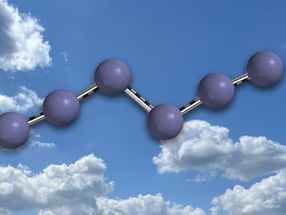Bread of the future: making wheat bread even more nutritious
How nutritious and healthy a loaf of bread is depends not only on the type of wheat - but also on the baking process
wheat contains many valuable nutrients - and can help to make a diet with bread even healthier. However, the nutrient content depends on the type of wheat. A rapid test method could help to increase the nutrient content of wheat along the entire value chain. This is the conclusion reached by researchers at the State Seed Breeding Institute of the University of Hohenheim in Stuttgart. In the Betterwheat project, together with the University Medical Center at Johannes Gutenberg University Mainz and four wheat breeding companies, they have recorded around 6,000 traits in more than 280 wheat varieties and 400 breeding lines. Another finding of the team led by Prof. Dr. Friedrich Longin: It is up to the bakers to decide whether the healthy ingredients in wheat bread can also be absorbed by the body. Only certain baking methods, such as an extended leavening process, make the nutrients available to the body.
Higher yields with the lowest possible use of fertilizers and pesticides as well as good baking properties: So far, this has been the common interest of all players in the wheat value chain - from breeding to the bakery.
However, the fact that wheat can also be an important source of nutrients is often overlooked: "Wheat is not only an important source of carbohydrates and protein in the global diet, but according to the FAO it also contributes over 20 percent to the global supply of fiber, minerals and trace elements," explains Prof. Dr. Friedrich Longin, Head of the Wheat Department at the State Seed Breeding Institute of the University of Hohenheim and coordinator of the Betterwheat project.
"However, how nutrients can be increased in wheat products has so far been a marginal topic in global value chains." One reason for this: "A high mineral content in wheat often goes hand in hand with lower yields."
Five years of research along the entire value chain
In order to find out which wheat varieties exhibit stable quality under different environmental and cultivation conditions, the University of Hohenheim and the University Medical Center of Johannes Gutenberg University Mainz as well as the wheat breeding companies Deutsche Saatveredelung AG, KWS Lochow GmbH, Limagrain GmbH and W. von Borries-Eckendorf GmbH & Co. KG spent five years of research work recording more than 6,000 traits in 282 wheat varieties and 400 breeding lines.
"The unique aspect of the project was the holistic view of variety traits along the entire value chain," emphasizes Prof. Dr. Longin. "In addition to important characteristics for successful cultivation, several dozen processing characteristics for bakeries were considered, as well as important ingredients and proteins that could be important for human nutrition."
And this was done on many important wheat varieties from Europe, which were tested in numerous growing environments. "This allows us to estimate the extent of the influence of breeding, but also of the growing environment, on these many traits," adds Dr. Johannes Schacht, head wheat breeder at Limagrain GmbH and coordinator of the economic partners in this project.
A healthy diet with wheat starts with the choice of variety
One focus of the team was on the nutrient profiles of different wheat varieties. "We examined around 800 wheat harvest samples for their content of 13 valuable trace elements and minerals, such as iron and zinc - micronutrients that are important for the immune system, our cells and metabolism, among other things."
The result: "We were able to determine that the nutrient content in different wheat varieties varies greatly - and can fluctuate by up to 50 percent," summarizes Prof. Dr. Longin. "Our experiments also show that the nutrients in wheat can be combined well with the required baking qualities in terms of breeding. These correlated very positively with the protein content and dough properties."
Nutrients in wheat can be measured using a rapid method
"In order to use this finding in practice, xrf fluorescence spectrometry is a method that can be used to measure the nutrient content in wheat quickly and reliably," explains Prof. Dr. Longin. The method uses X-rays to detect the ingredients in wheat and then quickly calculates them based on previous calibrations. The method, which has so far only been used for research purposes, could help to record and increase the content of minerals and trace elements along the value chain.
"But this is only possible if the additional effort is also paid for," emphasizes Prof. Dr. Longin. In addition, increasing many nutrients in wheat only makes sense if significantly more whole grains or at least flours with a high type number (1050 or better still higher) are consumed. This is because the valuable nutrients are usually found in the outer layers of the grain and the germ, both of which are milled away in light-colored flours of type 405, 550 and 812.
Baking process determines the bioavailability of nutrients
The researchers also investigated a known problem in more detail: "The healthy ingredients in wheat are bound in phytic acid. However, this cannot be digested and is excreted along with the beneficial nutrients."
In a further step, Prof. Dr. Longin and his team therefore investigated the influence that different baking methods can have on the amount of phytic acid in bread. "To do this, we worked with artisan bakers to test four very common baking methods," says the wheat expert.
The combination of a long dough method with a sourdough proved to be particularly effective. "We found that the phytic acid is almost completely broken down in this baking process, making the ingredients available to the body.
"All partners in the wheat value chain can influence the nutrient content of bread," summarizes Prof. Dr. Longin. "However, clear priorities must be set: First, we consumers should eat more whole grains. This should then be baked with a long leavening process, and only then does breeding and targeted grain trading make sense in order to further optimize the nutrient profile."
Note: This article has been translated using a computer system without human intervention. LUMITOS offers these automatic translations to present a wider range of current news. Since this article has been translated with automatic translation, it is possible that it contains errors in vocabulary, syntax or grammar. The original article in German can be found here.

































































